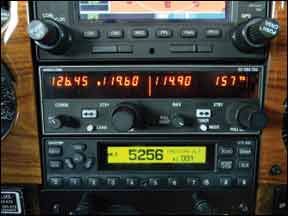Back in the day, you were top dog if your panel sported dual KX155 or MK12D digital navcomms. These days, that same panel begs to be upgraded to all-in-one navigators while the standalone navcomm plays second fiddle as backup. But that doesn’t make the navcomm radio extinct. For IFR flying, you’ll want the second comm radio while a backup nav receiver could be handy for raw data crosscheck on an RNAV approach. For basic LSAs, a standalone navcomm might be the only radio you’ll ever need.
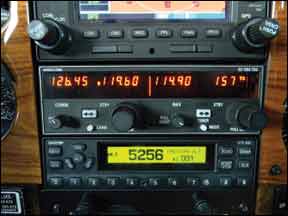
Still, we’re not sure dropping nearly seven grand for a new navcomm install always makes sense. That’s what a brand new Garmin SL30 or KX155A install could cost. Instead, a good eye on the used market can uncover some bargains worth chasing. This includes reaching deeper into your pockets to buy a used legacy GNS430. If you’re a Narco owner, condolences. Those radios are toast.
Think Installation First
Whether the project includes replacing an ancient navcomm with something newer or adding one to a stark radio stack, there are some prerequisites that add to the bottom line and up the performance. Unless you have an Aspen PFD or HSI, the radio needs to pair with an indicator.
There’s little flexibility here because there’s little standardization. Don’t expect an old Narco or ARC OBS indicator to work with a used KX155 you’ve found. On a higher level, don’t expect a KX155 to work with Garmin’s G500 PFD—the KX155 lacks the digital output needed to connect. We applaud Aspen for being compatible nearly across the board. In that interface, Aspen’s ACU (analog converter unit) takes the KX155’s and others’ analog nav signal and converts it to a digital format for needle presentation.
Before they install any navcomm system, a good shop will eyeball the condition of the existing antennas. Antennas are generally neglected and as airframes age, deteriorated antennas will degrade both comm radio and navigational signal performance.
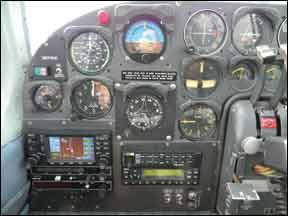
Fiberglass comm antennas with noticeable cracks and peeling of the outer layers are begging to be replaced. In fact, if you battle performance issues with an existing navcomm, it might make sense to replace antennas first (after bench test) which might also include coaxial antenna cabling. Expect some teardown and an invoice that could reach high triple digits, but the payoff could be worthwhile. In many cases, it’s unavoidable.
If you’re adding a navcomm that has glideslope, it might require upgrade of the navigational antenna coupler. This is a coaxial signal splitter that allows VOR, localizer and glideslope signal feed from a single antenna. Further, Garmin’s SL30 receiver design requires a specialized splitter since it has a single nav antenna input to its digital receiver. Your installing shop works this out and you pay for it.
On the topic of add-ons, the install of a navcomm could be a good time to upgrade the audio panel since a good portion of the radio wiring is interfaced through the panel.
Understand, too, that not all navcomm installs are created equal. If the project requires removing an ancient radio for a new model, it’s prudent to ask if the job includes all new wiring or if the new radio will be connected with the existing harnesses. A quick and easy install is to chop the old connector and tie it in with the existing wiring. But if this wiring is non-shielded—which is what you’ll find in many old panels—performance could suffer. And, if the new radio is smaller than the old one, do you want a restack or can you live with an awkward gap between radios? Don’t assume fancy sheet metal cosmetic work is part of the job. Ask.
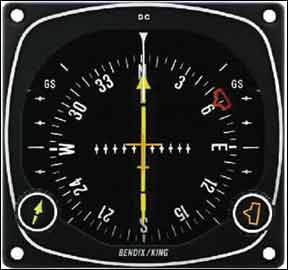
Choices: Bendix/King KX155
The KX155 is an icon that remains in the Bendix/King product line. It’s a lively seller on the used market, but after so many years of production, there are various vintages to choose from. From our experience, older serial-numbered units with traditional circuit design (as opposed to newer units with surface-mount board design) seem to be good performers, particularly on the nav receiver side. However, failures of the gas discharge displays are routine maintenance events that tally a shop invoice of around $400 to $500. Be sure the one you pick has a healthy display.
Frequency channeling problems aren’t uncommon, the result of dirty or eventual failure of the gold-plated channeling switch contacts. The KX165 model has the integral VOR converter required to drive analog HSIs.
When Cessna started building aircraft again in the late 1990s, Honeywell launched what looked to be the KX155 replacement through the Silver Crown Plus series. This birthed the KX155A and KX165A. These models had some growing pains and reliability issues earlier on. They bring limitations to the aftermarket because of their 28-volt input requirements. On the plus side, they sport a more contemporary-looking bezel and useful features that were missing in legacy KX155s. This includes flight timer, frequency memory and recall, plus nav radial display.
Like vintage KX155s, the units are built with and without integral glideslope receivers. If you’re also shopping the standalone used GPS market, the 155A units support a KLN94 feature Bendix/King calls Quick Tune—an RS232-driven interface that plucks frequencies from the KLN94 database based on your position so you don’t have to search for and load them yourself. It works we’ll and adds a bit of automation to otherwise ho-hum functionality. It also adds more wiring effort to the installation.
Pricing for used KX155s is all over the board, with non-glideslope and 28-volt KX155s selling for as low as $1200 while 14-volt and glideslope-equipped flavors demand $2500 and up, not counting indicator or install kit. List pricing for a factory-new KX155 with glideslope is $4560 and the KX165A is $5600.
But that’s not where it ends. A used KI209 CDI can sell for around $900 while a new one tops out at nearly $1700. Speaking of CDIs, we found it odd that the low-end, VOR-only KX125—a unit with an economy LCD display and integral CDI—has a price nearing $5000. In our view, this makes little sense since the unit doesn’t have glideslope.

Garmin SL30
The Garmin Slimline SL30’s claim to fame includes a digital DSP signal processor. DSP technology eliminates the unstable needle scalloping found with analog nav receivers. Scalloping navigation needles can induce autopilot S-turns and the SL30, with its digital receiver, solves that slop. The catch with a standalone SL30 interface is the need to buy the $2395 Garmin MD200-306 OBS indicator, a high-quality indicator that’s made by Mid Continent Instruments. This, coupled with the unit’s $4395 price tag, drives the bottom line up in a hurry. Better are interfaces that already include an Aspen or Garmin PFD or an HSI, of course.
Thanks in part to the DSP circuitry, the SL30 displays digital To/From, automatic display of station ID by encoding the received stations Morse code and digitally decoded OBS setting on the unit’s display. It has a built-in glideslope receiver and an 8-watt, 760-channel comm transceiver that features automatic emergency frequency call-up, frequency storage, and National Weather Service broadcasts.
Aside from the benefits of the SL30s panel-saving, slim footprint that measures 1.3 inches high the unit comes with a unique operating logic. One feature we’ve grown fond of (that’s also standard in the stand-alone SL40 Comm transceiver) is the ability to monitor the tuned standby frequency at a lower volume than that of the active frequency. This is much like having dual nav and dual comm functions in a single box. It also allows for listening to ATIS, for example, without having to leave the active frequency. There’s even a serial interface for connecting to some Garmin portable GPS units for frequency automation.
TKM Direct Replacement
For quick and easy replacement of the old KX170-series, ARC/Cessna radios and some Narco models, you could drop in a TKM radio. Veteran manufacturer TKM/Michel Avionics in Scottsdale has the market covered with the MX-series slide and fly replacements that sell for around $1600 and won’t require mods to the wiring.
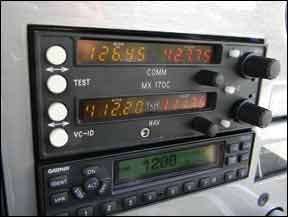
These are digital, 760-channel navcomms with the ability to channel an existing remote glideslope receiver. There’s the Bendix/King replacement MX170C (not to be confused with the MAC1700 digital conversion to the KX170B front end), the ARC-replacement MX300/385 series radios and the MX12 if you still have the tube-driven Narco MK12A. The MX12 bypasses the remote power supply with its own solid state supply.
TKM sells overhauled and rebuilt products on their eBay store. These discounted radios carry a one-year warranty and are supplied with FAA 8130-3 airworthiness paperwork. Despite some grumbling from a few shops and end users, we recently dealt with TKM on a repair and found the factory service to be quite good and reasonably priced. Our only beef was the length of time it took to get the repair accomplished and the MX385 back from Scottsdale.
Conclusion
There’s no question the standalone navcomm radio is a dying breed, evident by the lack of fresh models in the market and the lethargic sales of existing products. The popularity of integrated all-in-one navigators and the widespread need for IFR-approved GPS has a lot do with this trend.
If you’re in the market for a new navcomm, either for primary or backing up an integrated navigator, our top pick is the Garmin SL30. We think it offers reliable and high-end comm and nav performance with a host of useful features packed in a space-saving chassis. If you have the space and need a reliable secondary backup, we think picking the best from the used KX155 litter makes the most sense. A plus is that the KX155 works we’ll with Aspen PFDs, easily interfacing electronically as nav 2.
Last, before making a move on any navcomm upgrade, solicit a quote or two for a used GNS430. We think the right unit will offer a better solution with sizeable long-term growth potential and functionality, something a traditional navcomm might not offer.
Larry Anglisano is Aviation Consumer’s avionics editor. He works at Exxel Avionics in Hartford, Connecticut.

